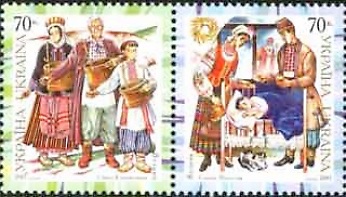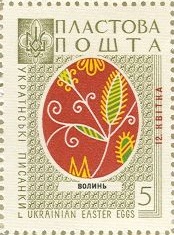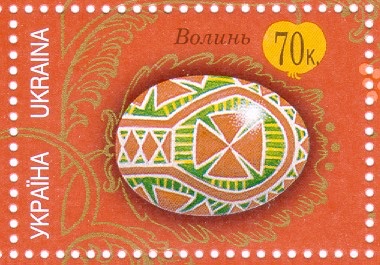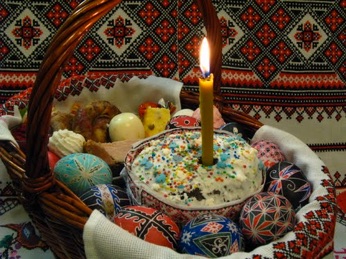Volyn
Волинь
Volyn
Волинь

Volyn

(Illustration on the right: Prince Igor Exacting Tribute from the Drevlyans, by Klavdiy Lebedev (1852-1916))
The early Volynians were the last Ukrainians to accept Christianity, but, once converted, they stayed converted, as they were among the only western Ukrainians to preserve their Оrthodox faith and resist Catholicism.
Volynians fought both Polonization and Russification in the twentieth century, and Volyn was the birthplace of the UPA, the resistance army that fought in WWII against the Germans, Russians and Poles.
Volyn has preserved its identity, despite being carved up by Soviet cartographers. It retains its traditional folkways, including its traditional costumes, which are now worn only for folk performances or special occasions.

Volynian costume on Ukrainian stamps

Traditional wedding costumes from Volodymyr Volynskyi region
Volynian villages, although slowly modernizing, retain many of their folk attributes. Whitewashed houses, although now possessing roofs of metal rather than straw, still sit in neatly fenced yards full of flowers, fruit trees and chickens.

Village scene, Volyn
Volyn’s pysanka patterns have been preserved, too. In the 1960s, Plast published a series of pysanka stamps. Representative pysanky from all regions of the country were included. This is the one of the two they included for Volyn:

Oddly enough, this is probably the least representative example they could have chosen, as Volynian pysanky are only sometimes floral, and tend more towards the geometric. Stamps put out by the Ukrainian government a few years ago did a better job of representing Volyn’ with a sakvy-style pysanka.

For photos of Volynian pysanky, go to the photo gallery here.

My mother is from Volyn, from the village of Kniazhe (Княже) in southwestern Volyn (currently part of Lviv oblast, Sokal raion). I still have a lot of family in the region, and consider myself more than half Volynian. That is why this region and these pysanky have a special place in my affections.

A Volynian Easter basket

J.Lewicki de Simon fils a Strasbourg 1838 -1841
Back to Volyn Home
Back to Western Ukraine Home
Back to Regional Pysanky Home
Back to Traditional Pysanky HOME
Search my site with Google
